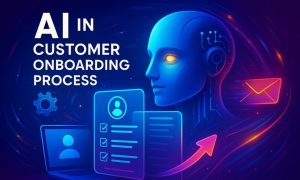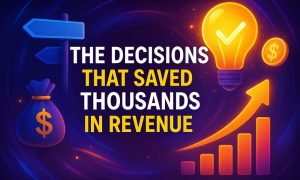With the business size being small, it is far easier to ensure a personal customer experience for every customer. But as the business scales up, even with the best efforts of the customer success team, integrating the one-to-one method becomes harder.
That’s where a scalable customer success strategy comes in. This is the most proven business method that helps deliver proactive, personalized support to a large customer base without making the CS team overwhelmed. It combines tools that work automatically, online communication, and personal help when needed. Businesses can ensure satisfied customer bases and boost revenue growth at the same scale.
In this post, we are going to discuss all about scalable customer success, its importance, and how to implement scalable customer success stages in a business.
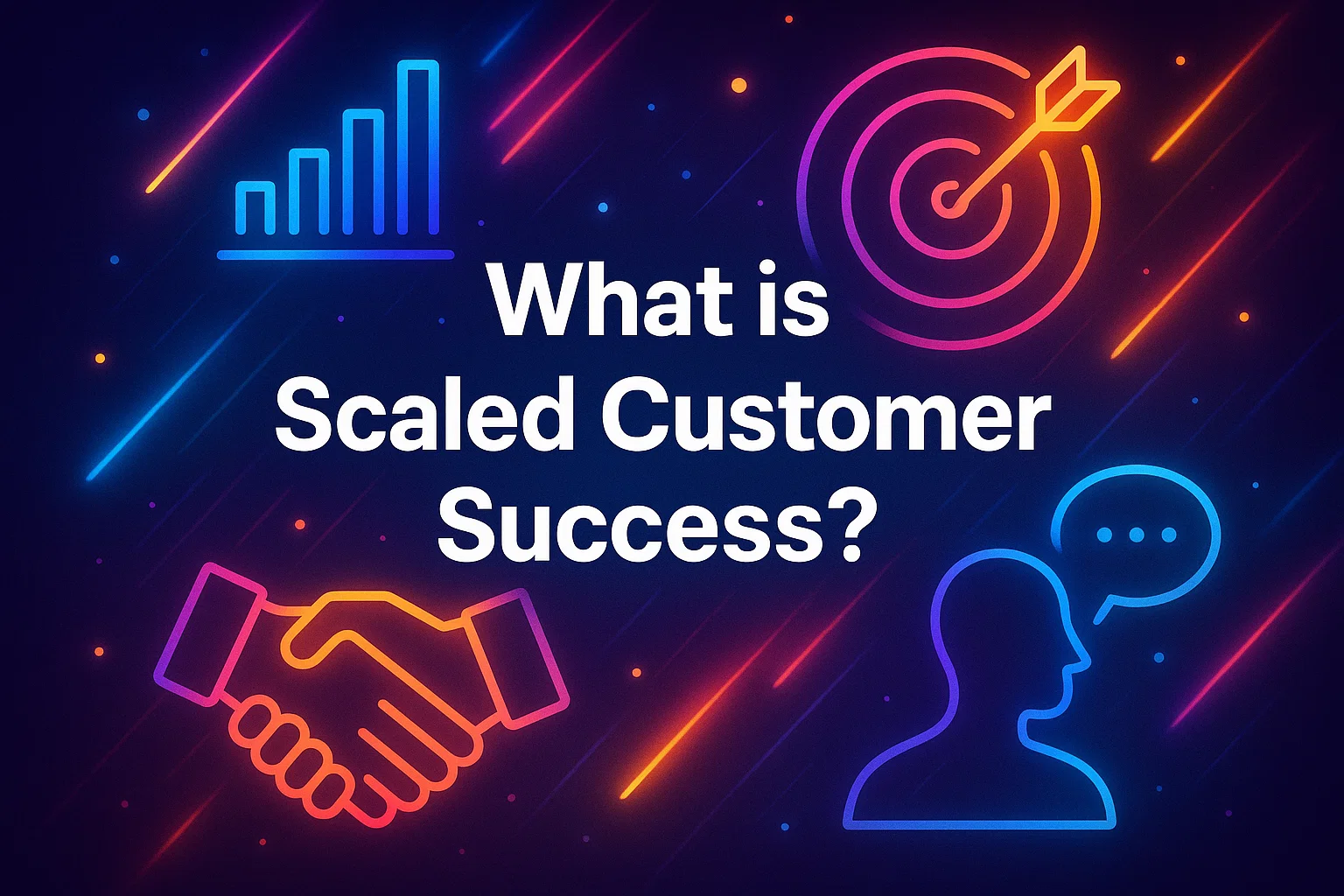
What is Scaled Customer Success?
Scaled customer success is a strategy that helps businesses support more customers effectively without relying only on one-on-one interaction
Scaled CS targets the larger customer base and optimizes their user journey with the company. They interact with the companies through the onboarding, product adoption, and renewal stages. The best part is that it combines digital tools and human support so that customers get the right help at the right time.
It helps to build a strong customer success model where businesses can grow faster, serve more customers, and keep loyalty and satisfaction high without even burdening the team members.
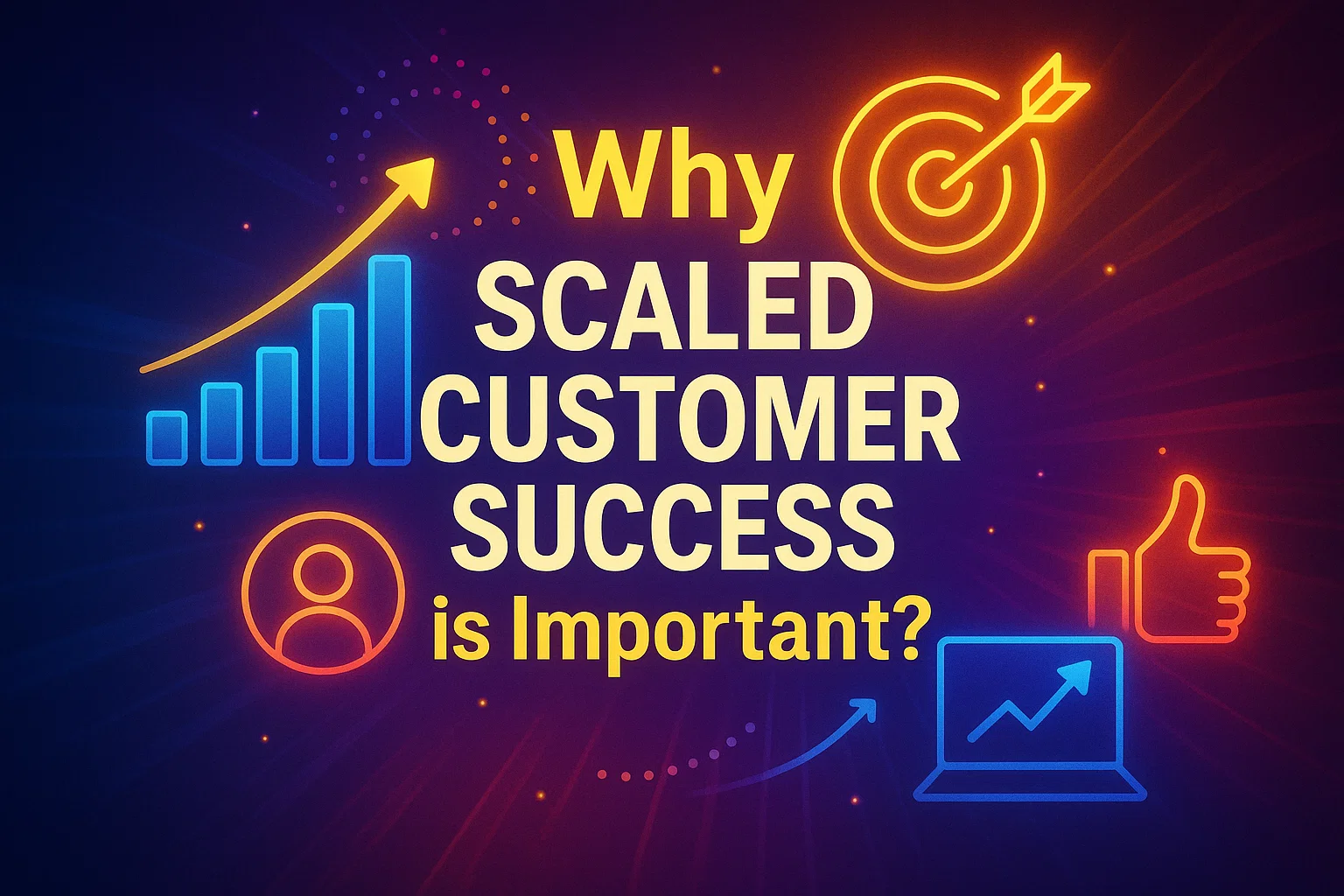
Why Scaled Customer Success is Important?
With the growing customer base, it is essential to deliver a personalized, high-quality experience to every customer. But due to the lack of proper strategies and techniques, businesses often struggle to meet customer needs. This leads to delayed responses, inadequate support, and personalized attention, which negatively affect business growth.
According to recent studies from Salesforce, up to 88% of customers report that experience with the company directly matters to how the product and service are perceived.
So, to enhance the customer experience and reduce the challenges, scaled customer success systems are the go-to solution. It helps businesses deliver consistent, value-driven engagement across a broad customer base, maintaining high quality without overwhelming the team.
Instead of reactive approaches when problems arise, scaled customer success focuses on proactive methods. It guides customers with the required resources and helps them achieve success earlier and more smoothly.
Without a scalable system, a business may face several negative outcomes, including:
- Slower response times
- Customers feel neglected.
- Increased churn rates.
- Frequently missed growth opportunities.
But smart scaling offers structured programs across the customer journey, including onboarding, education, usage milestones, and renewal playbooks. These programs run automatically and help deliver a personalized experience to customers. Customers will continue to progress, and businesses can scale at the same rate.
Key Principles of Scaled Customer Success
The core principle of a scaled customer success is ensuring personalized value to more customers efficiently with the easy usage of automations and segmentation.
Here are the key principles that make scaled CS work:
Proactive Engagement at Scale
Instead of waiting for customers who reach out with problems, businesses need to be one step ahead. You can utilize automated emails, in-app messages, webinars, and helpful content to guide at an early stage. It not only builds trust but also keeps customers moving toward success without the need for constant one-on-one support.
Personalization Through Automation
Even when done with automation, it should feel personal. It is best if you can segment customers according to their needs and use their behavior to trigger messages. Then you can easily adjust your content and master the journey. This way, every customer feels valued with the manual implementation.
Outcome-Focused Strategy
Customer success is not about how many emails or calls you send. You should focus on whether you have been able to drive results. Each of your strategies should meet customer demands at every stage, like onboarding, active usage, or renewals.
Smart Segmentation and Targeted Experiences
It wouldn’t bring success if you treat all the customers in the same way. Instead, you can group or segment the customer base by needs, behavior, or stage. Then you need to adjust their CS methods that meet individual needs.
Continuous Feedback and Optimization
Scaling without changing business needs is an ongoing process. You need to regularly collect customer feedback, track engagement metrics, and refine your strategies. It will help you to best meet changing customer needs and expectations at the same quality.
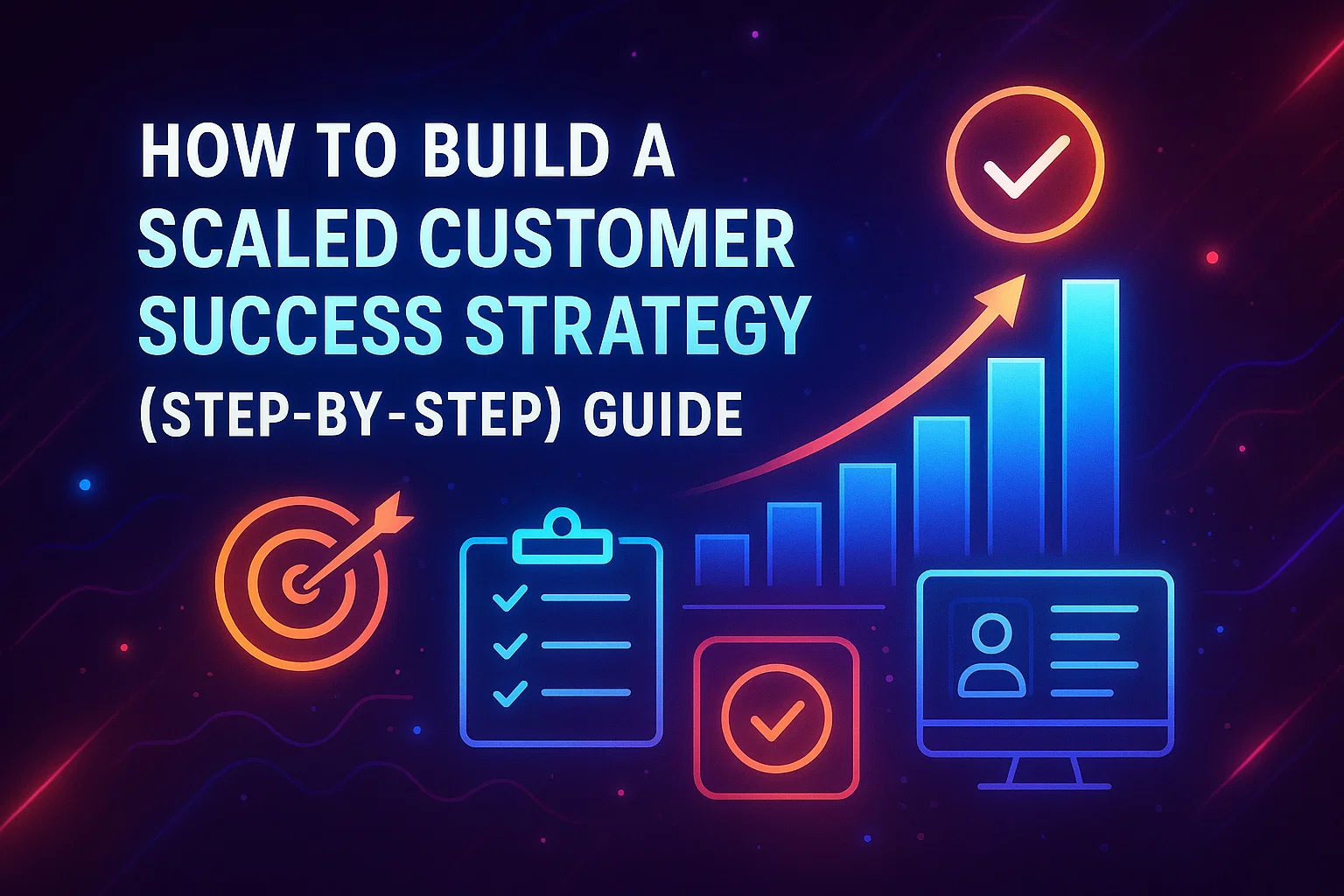
How to Build a Scaled Customer Success Strategy (Step-by-Step) Guide
To build a customer success strategy, well segment your customers, automate engagement, personalize support, track the results, and adjust the strategy according to the data analytics.
Here’s a practical step-by-step framework to build it the right way:
Step 1: Segment Your Customer Base
All you need to first, start by grouping your customers based on factors like account size, product usage, customer lifecycle stage, or revenue potential. It is important because not every customer needs the same level of support. Segmentation ensures you focus the right resources on the right customers. It makes your customer success efforts more efficient and impactful.
Step 2: Define Clear Success Milestones for Each Segment
Next, define your customer goals to enhance your efforts. Every customer has unique goals. For the new customer base, you need to focus on the implementation of an effective onboarding process. If it’s an established customer base, you need to work for their growth, like renewal or expansion. Through defining milestones for each segment, you will know how to interact and ensure progress toward outcomes.
Step 3: Automate Repetitive but Valuable Interactions
At this stage, you need to focus on such automation tasks that truly bring value. For instance, you can offer welcome emails, onboarding tutorials, check-in surveys, usage tips, and renewal reminders. Automated interactions ensure timely and personalized experiences for the customer and help them achieve their desired outcomes for the product or service.
Step 4: Blend Digital Programs with Human Support
Now it’s time to combine digital tools, such as webinars, resource centers, and self-help content, for scalability. But also, you need to add some very personal human outreach for key moments. This is like when you are resolving onboarding issues, contract renewals, or when customer health scores suddenly drop. This way, you can efficiently maintain the growing customer base with the best quality.
Step 5: Track Success Metrics and Optimize Continuously
This is the time to monitor the key performance of your strategy to define how well it is going. You can use some important KPIs in this instance, such as onboarding completion rates, customer health scores, product adoption, and Net Promoter Score.
Through regularly tracking your performance, you can easily define the key areas for improvement and adjust your methods accordingly.
Tools and Technology for Scaled Customer Success
Some of the most used tools and technologies in the scaled customer success include CRM software, automation platforms, and customer health tracking tools. In addition to this, businesses need self-service portals and analytics platforms to optimize customer engagement.
Here’s the essential technology stack you need for a successful scaled CS program:
1. CRM Systems or Customer Relationship Management
CRM tools are the central hub for all customer information. It helps you track interactions, manage contacts, and understand customer history. With the CRM, you can automate follow-ups, personalize messages based on behavior, and keep your entire team engaged on customer needs.
- Examples: Salesforce, HubSpot, Zoho CRM
2. Customer Success Platforms
A customer success platform helps monitor customer health and drive proactive engagement. It automates some essential tasks like success playbooks, renewal reminders, or finding at-risk customers.
- Examples: Statwide, Gainsight, Totango, ChurnZero
3. Marketing Automation Tools
With the marketing automation tools, you send the right message to the right customer at the right time. Plus, you can automate onboarding emails, product tips, promotions, and feedback surveys. These all keep customers engaged throughout their journey without any manual effort.
- Examples: ActiveCampaign, HubSpot Marketing Hub, Mailchimp
4. Self-Service Support Tools
Self-service tools help customers find solutions themselves with the end of support tickets. Through the proper implementation, you can free up your CS team from the related tasks and give your customer immediate access.
- Examples: Zendesk Help Center, Intercom Knowledge Base, Freshdesk
5. Customer Feedback and Survey Tools
Through the customer survey and feedback tools, the CS team can get valuable insights directly from users and help understand their needs. For instance, you can measure NPS and CSAT, and find areas for improvement and optimize the customer experience.
- Examples: Delighted, SurveyMonkey, Qualtrics
Conclusion
Scaling customer success is not about automating everything. It’s about finding the strategic methods that ensure a personalized experience with the right personal touch.
All you need to do is best utilize the technology, carefully segment the customer base, and create programs to reach out before problems even happen. It helps businesses deliver the right value at every point of the customer’s journey.
Author
Shirikant is a proven customer success leader who combines sharp business insight with practical experience to improve retention and drive revenue. As the founder of Statwide, he designs customer-first business strategies that guide companies to turn users into loyal and long-term partners. His approaches are built on real results: stronger relationships, higher customer value, and lasting growth.



